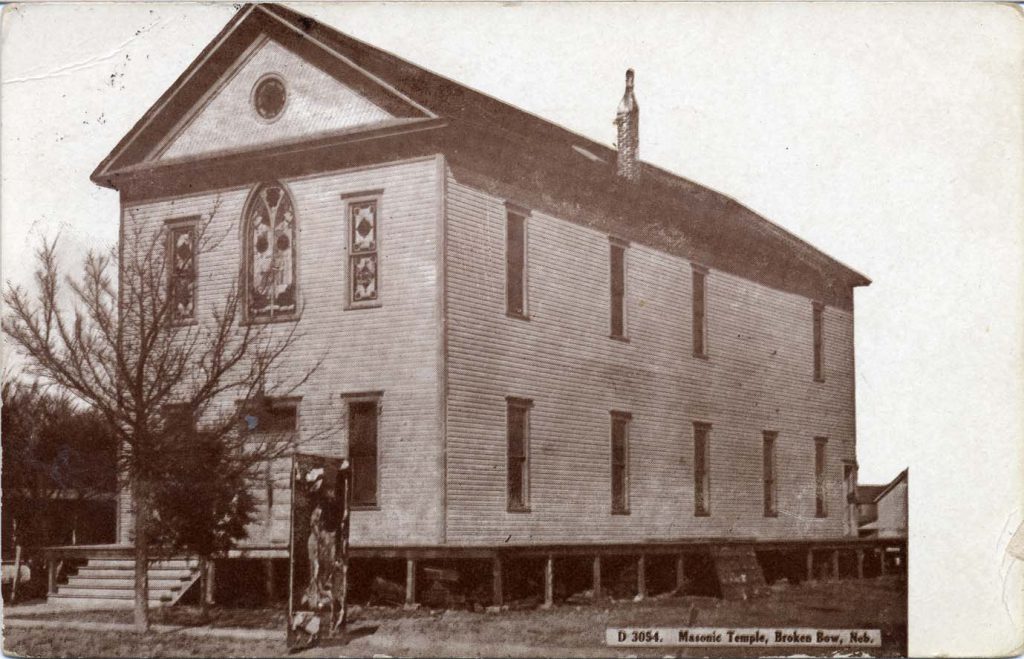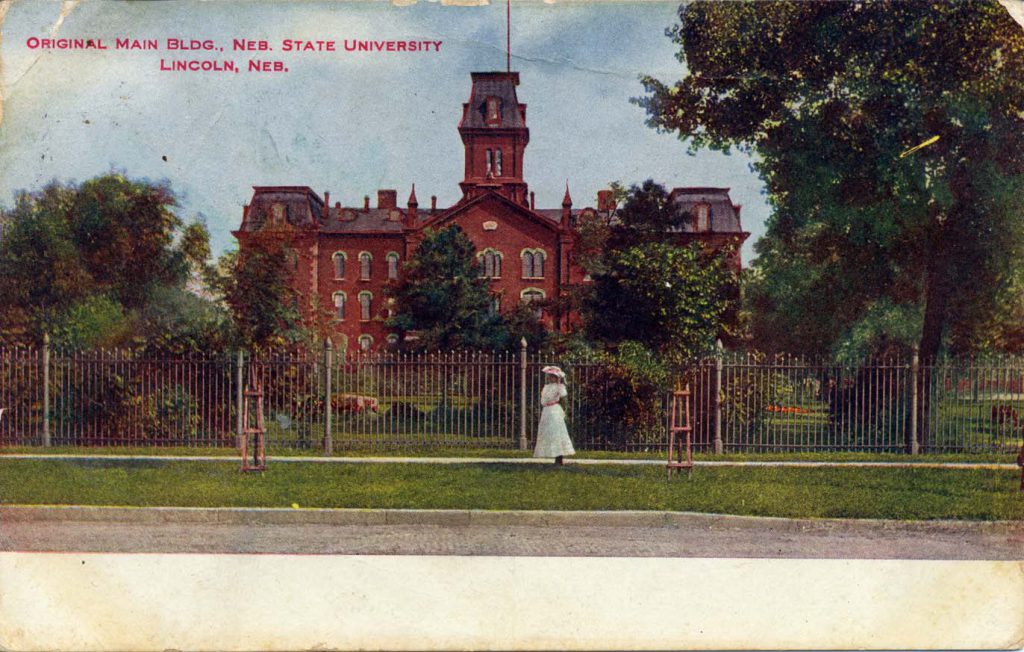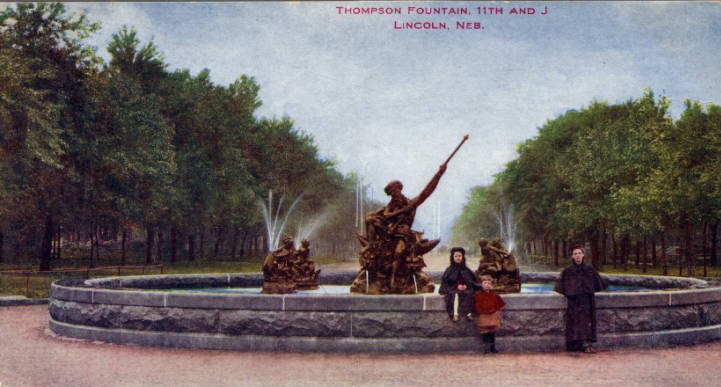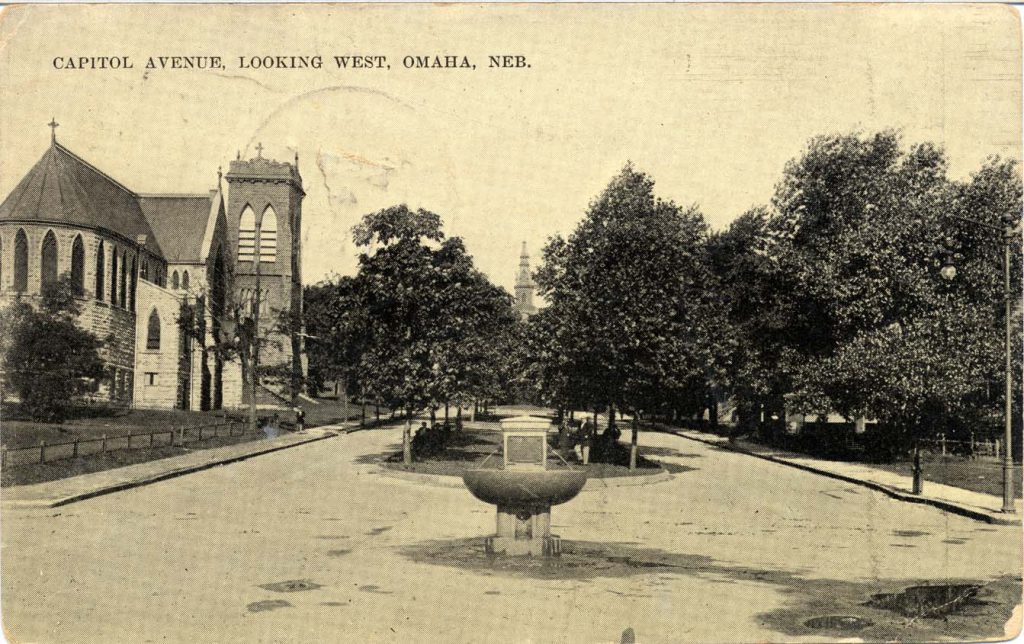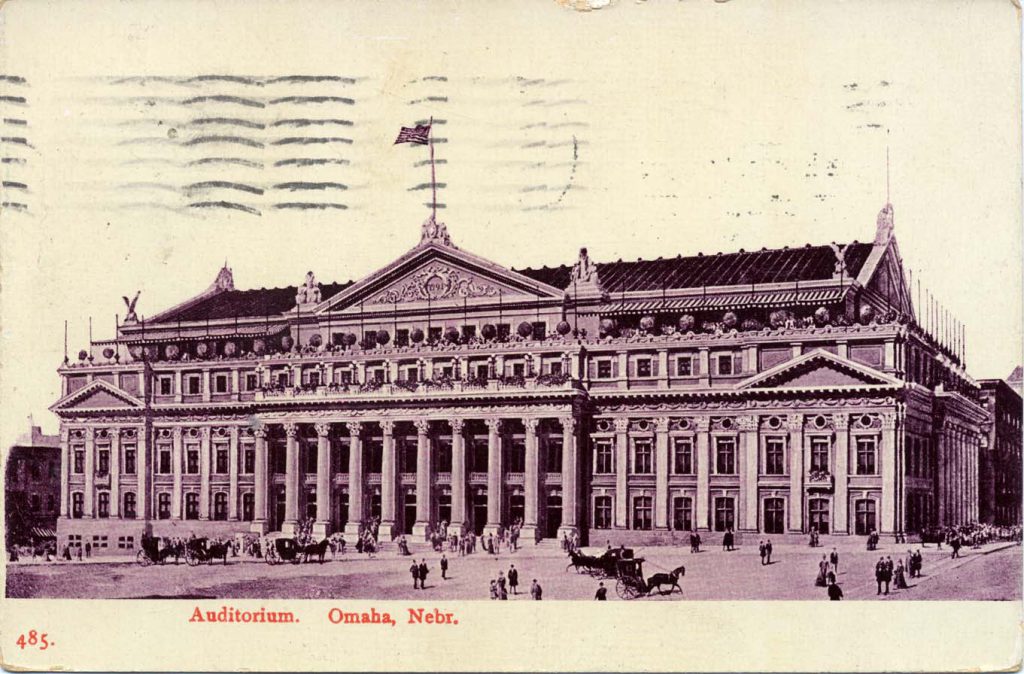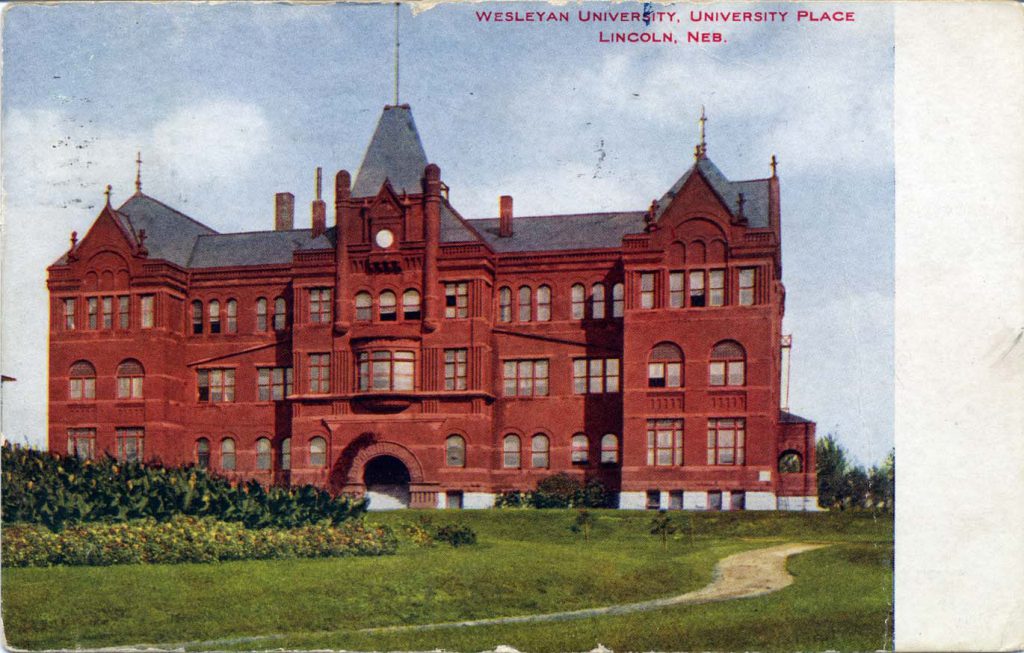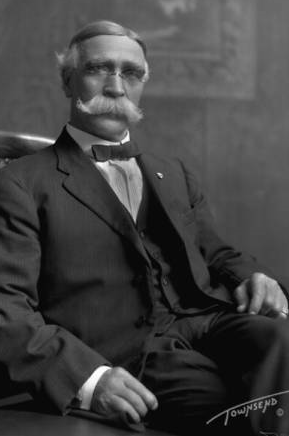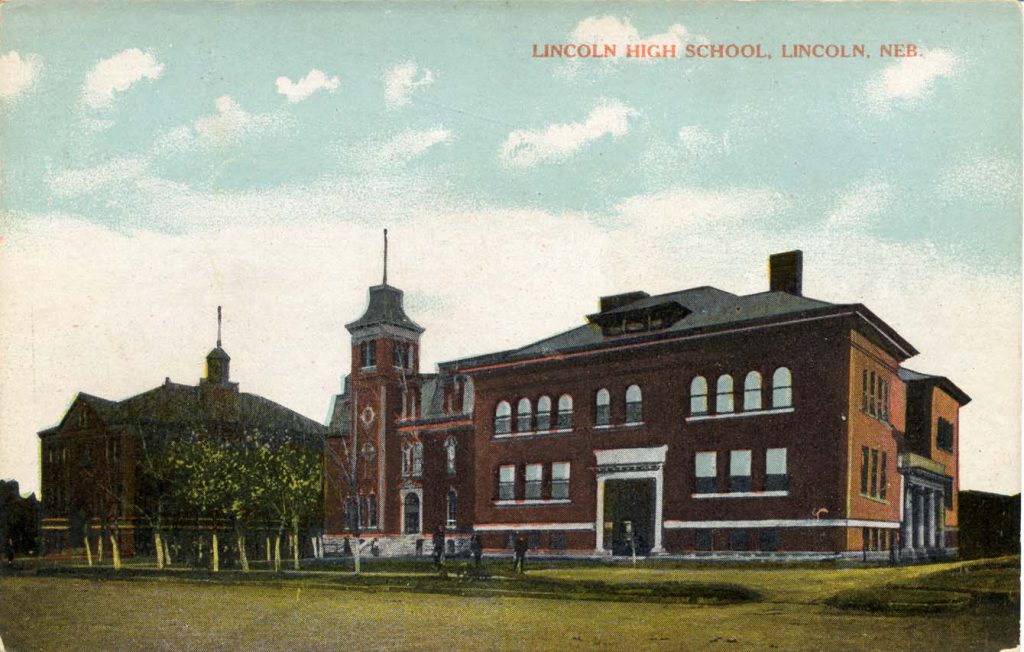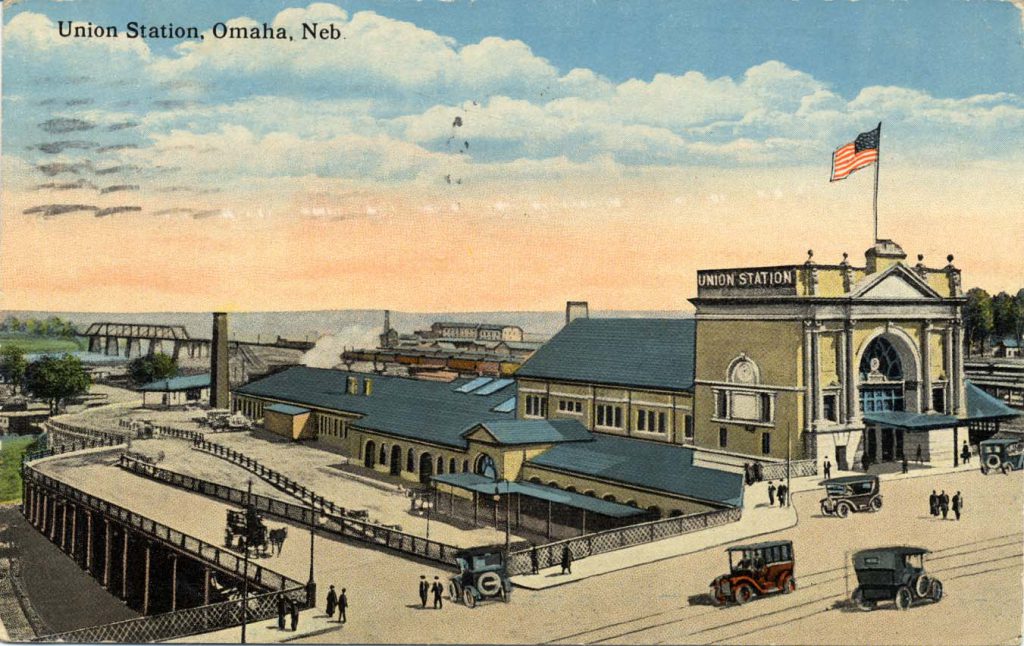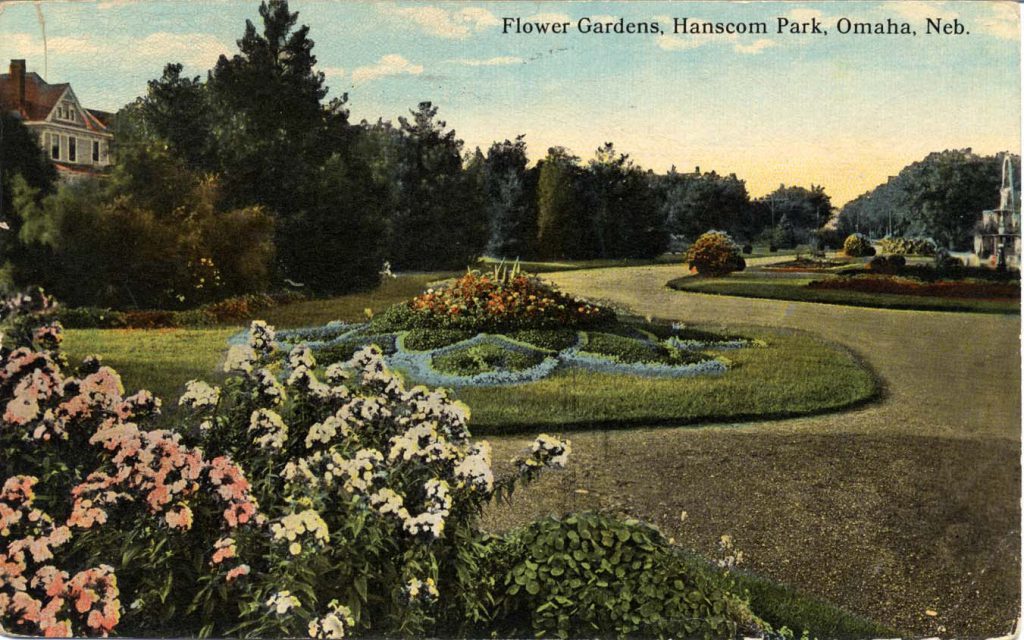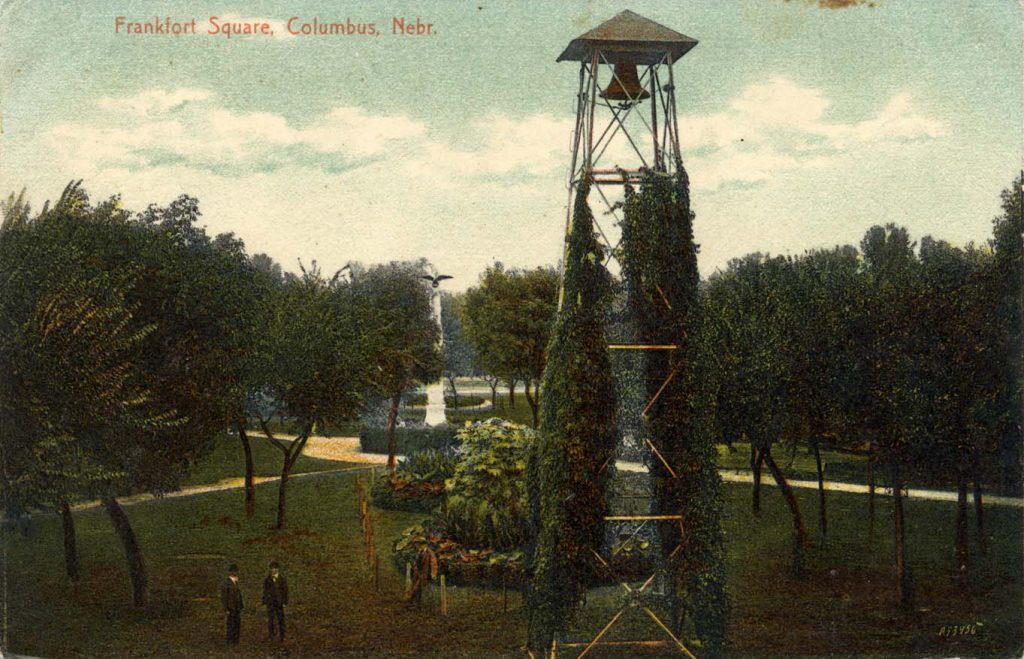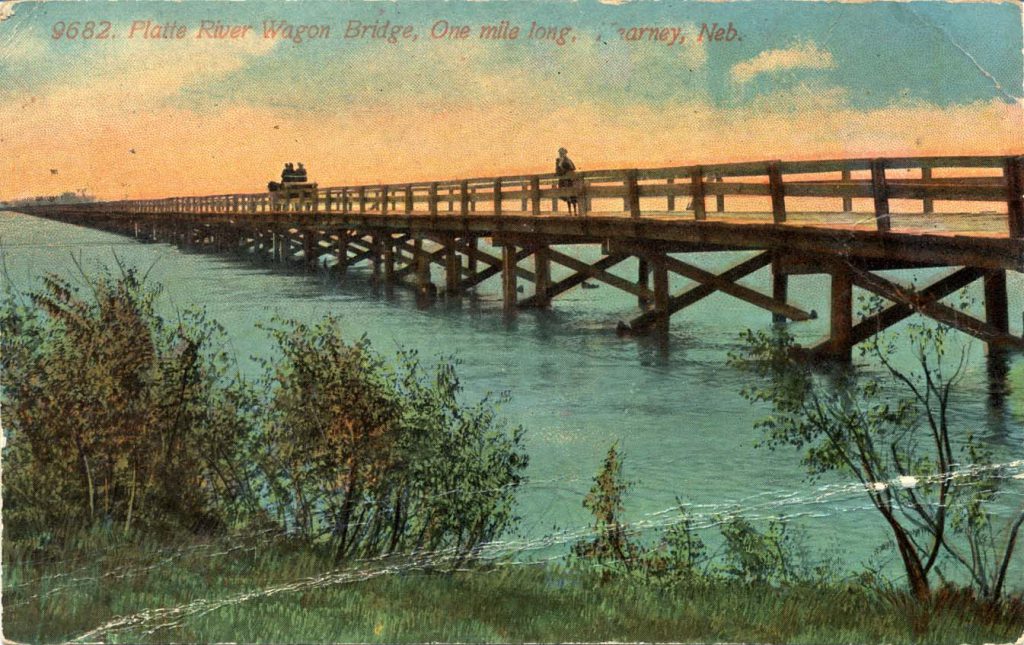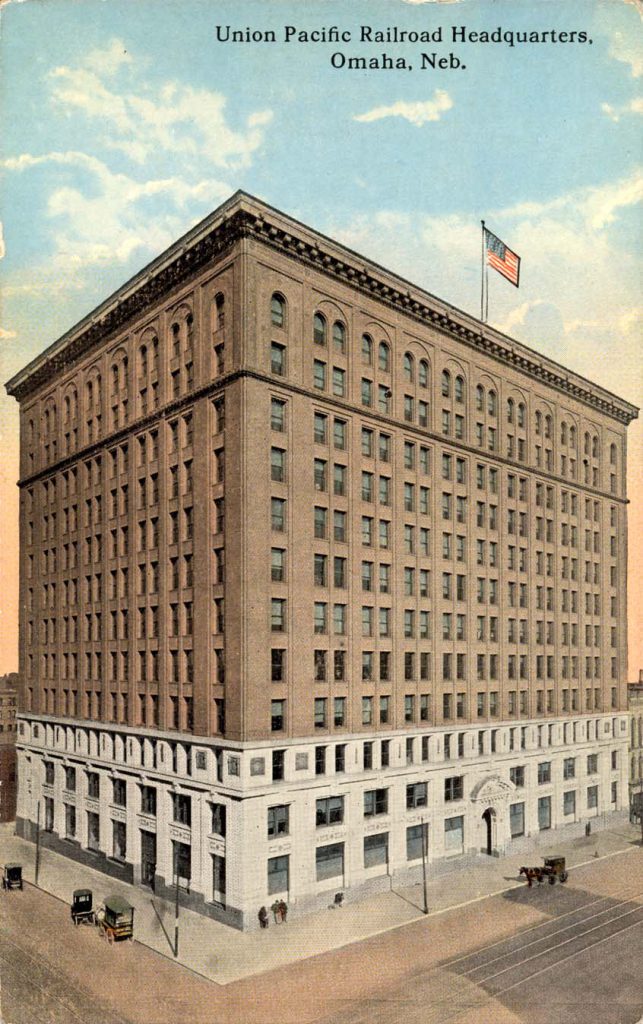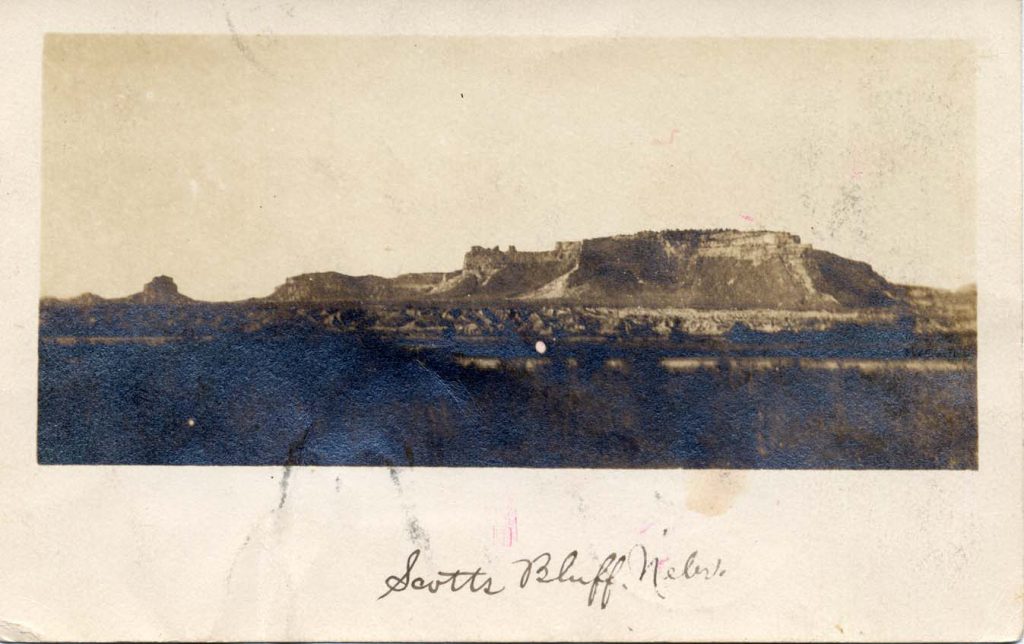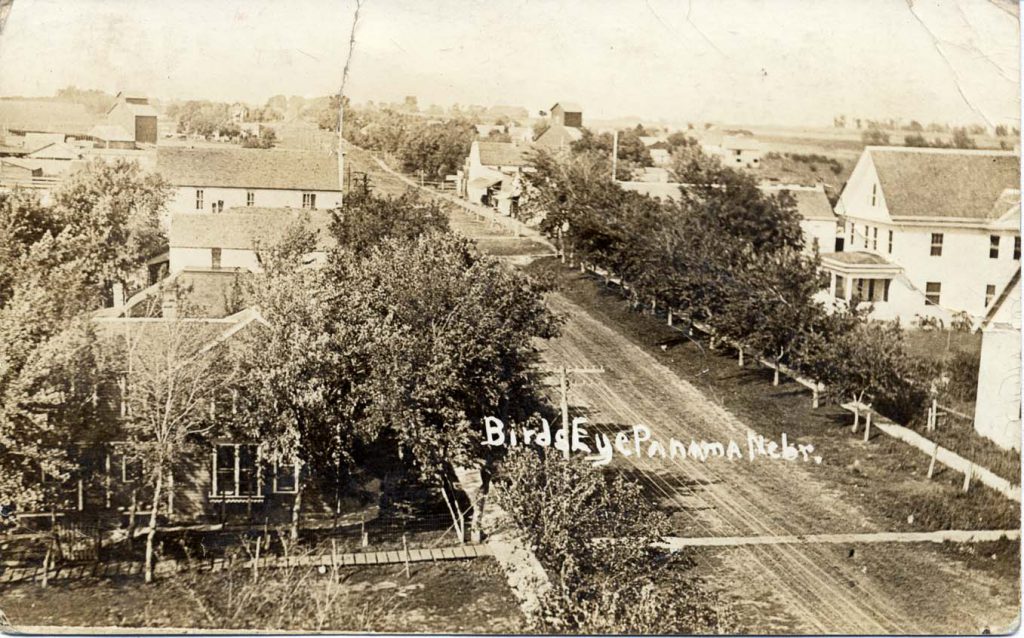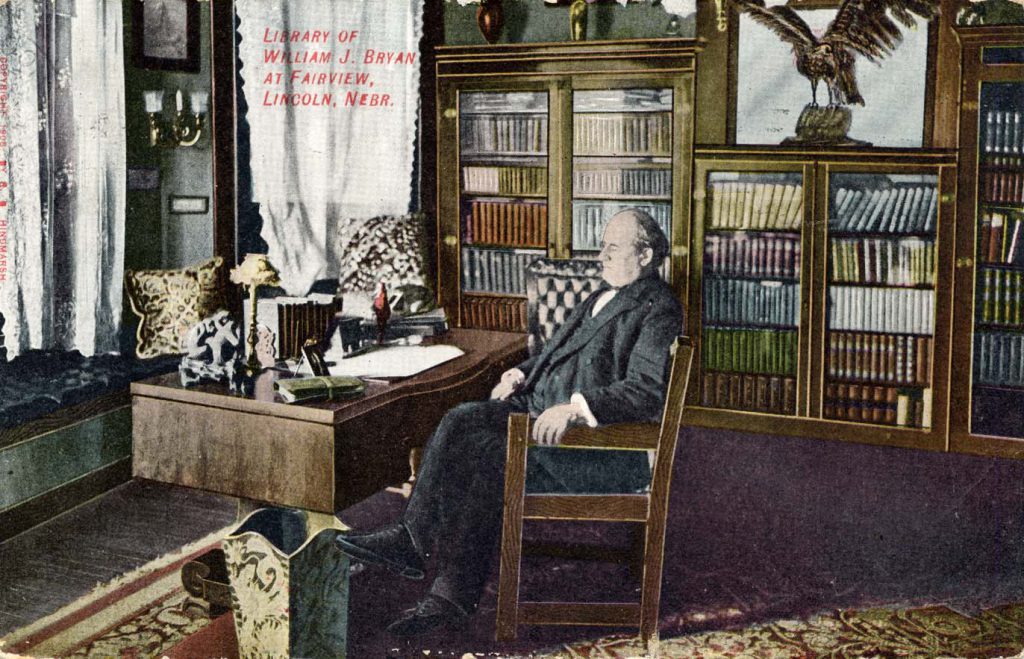Search the Blog
Categories
- Books & Reading
- Broadband Buzz
- Census
- Education & Training
- Friday Reads
- General
- Grants
- Information Resources
- Library Management
- Nebraska Center for the Book
- Nebraska Libraries on the Web
- Nebraska Memories
- Now hiring @ your library
- Preservation
- Pretty Sweet Tech
- Programming
- Public Library Boards of Trustees
- Public Relations
- Talking Book & Braille Service (TBBS)
- Technology
- Uncategorized
- What's Up Doc / Govdocs
- Youth Services
Archives
Subscribe
Category Archives: Nebraska Memories
Throwback Thursday: Masonic Temple, Broken Bow, Nebraska.
Posted in General, Nebraska Memories
Leave a comment
Throwback Thursday: Original main building, Nebraska State University
Postcard of original main building, Nebraska State University, Lincoln, Nebraska. Approximate date early 1900’s.
Posted in General, Nebraska Memories
Leave a comment
To Serve at the Pleasure of the President
Among the positions appointed by a United States president are ambassadors to foreign countries. One former ambassador with Nebraska ties was David Eugene Thompson.
Born in Michigan, Thompson came to Lincoln by way of his work with the Burlington Railroad and made his mark in Lincoln during the 1890s and early 1900s. In addition to his work with the railroad, he was president of local gas and insurance companies.
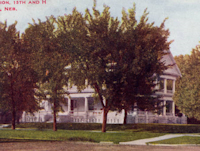
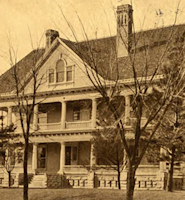 In 1892, Thompson and his wife, Jeannette, built a Neoclassical Revival-style two-and-a-half story house at 1445 H Street, seen in the postcards at left and right (Nebraska Library Commission Collection). The elegant residence contained several wood-paneled rooms on the first floor, six fireplaces, and a third floor ballroom. The Thompsons sold this house to the State of Nebraska in 1899 to serve as the first official Governor’s mansion. The sale included many of the furnishings. For more information about and photographs of the house, see James E. Potter, “The Governor’s House, the People’s House: Nebraska Governors’ Residences” Nebraska History 89 (2008):26-41.
In 1892, Thompson and his wife, Jeannette, built a Neoclassical Revival-style two-and-a-half story house at 1445 H Street, seen in the postcards at left and right (Nebraska Library Commission Collection). The elegant residence contained several wood-paneled rooms on the first floor, six fireplaces, and a third floor ballroom. The Thompsons sold this house to the State of Nebraska in 1899 to serve as the first official Governor’s mansion. The sale included many of the furnishings. For more information about and photographs of the house, see James E. Potter, “The Governor’s House, the People’s House: Nebraska Governors’ Residences” Nebraska History 89 (2008):26-41.
 The Thompsons next lived in the Lincoln Hotel seen at right (Townsend Studio Collection) and maintained rooms there as late as 1908. While living here, Thompson founded the Lincoln Daily Star newspaper, later the Lincoln Star, which finally merged with the Lincoln Journal in 1995 to become the current Lincoln Journal Star. He also became more involved in politics. President Theodore Roosevelt appointed Thompson as the “Envoy Extraordinary and Minister Plenipotentiary” to Brazil. Thompson took up his position as of April 1,1903. As of March 16, 1905, the position became “Ambassador Extraordinary and Plenipotentiary,” and the Thompsons remained in Brazil until November 1905. President Roosevelt next appointed Thompson as Ambassador to Mexico where he served from March 1906 to December 1909.
The Thompsons next lived in the Lincoln Hotel seen at right (Townsend Studio Collection) and maintained rooms there as late as 1908. While living here, Thompson founded the Lincoln Daily Star newspaper, later the Lincoln Star, which finally merged with the Lincoln Journal in 1995 to become the current Lincoln Journal Star. He also became more involved in politics. President Theodore Roosevelt appointed Thompson as the “Envoy Extraordinary and Minister Plenipotentiary” to Brazil. Thompson took up his position as of April 1,1903. As of March 16, 1905, the position became “Ambassador Extraordinary and Plenipotentiary,” and the Thompsons remained in Brazil until November 1905. President Roosevelt next appointed Thompson as Ambassador to Mexico where he served from March 1906 to December 1909.
The Thompsons remained in Mexico City where Thompson bought and managed the Pan-American Railway until his wife’s death in 1911. Mrs. Thompson was buried in the Wyuka Cemetery in Lincoln, and Thompson lived in Lincoln for a few more years before moving to California. After his death in 1942, Thompson was also buried in the Wyuka Cemetery.
At some point during the 1900s, the Thompsons gifted the city of Lincoln with the fountain seen below (Nebraska Library Commission Collection). Located at 11th and J Streets, the fountain remained a prominent feature of the capitol/university/downtown district until it was moved to Antelope Park which was developed in the late 1910s.
Visit Nebraska Memories to search for or browse through many more historical images digitized from photographs, negatives, postcards, maps, lantern slides, books and other materials.
Nebraska Memories is a cooperative project to digitize Nebraska-related historical and cultural heritage materials and make them available to researchers of all ages via the Internet. Nebraska Memories is brought to you by the Nebraska Library Commission. If your institution is interested in participating in Nebraska Memories, see http://nlc.nebraska.gov/nebraskamemories/participation.aspx for more information, contact Devra Dragos, Technology & Access Services Director.
Posted in Nebraska Memories
Leave a comment
Throwback Thursday: Capitol Avenue looking West, Omaha, Nebraska
Posted in General, Nebraska Memories
Leave a comment
Throwback Thursday: Auditorium, Omaha, Nebraska
Posted in General, Nebraska Memories
Leave a comment
Throwback Thursday: Wesleyan University
Postcard of Wesleyan University, University Place, Lincoln, Nebraska. Approximate date early 1900’s.
Posted in General, Nebraska Memories
Leave a comment
The Herpolsheimer Company
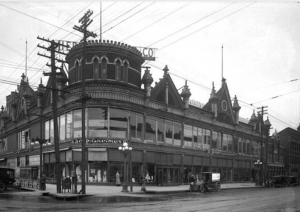 With Christmas just days away, many of us have been busy shopping for gifts. In the early days of Lincoln, residents had the choice of two department stores, Miller & Paine and Herpolsheimer’s. While Miller & Paine may be a name Nebraskan’s recognize I’m guessing most people don’t recognize the Herpolsheimer Company.
With Christmas just days away, many of us have been busy shopping for gifts. In the early days of Lincoln, residents had the choice of two department stores, Miller & Paine and Herpolsheimer’s. While Miller & Paine may be a name Nebraskan’s recognize I’m guessing most people don’t recognize the Herpolsheimer Company.
Henry Herpolsheimer first opened a dry goods store with Otto Mohrenstecher on O Street in downtown Lincoln. According to Lincoln historian Jim McKee, Henry built a new, 73,000-square-foot store at the corner of 12th and N Street in 1880. As you can see in the pictures of the building, there were large windows on the north side of the building. The store earned the nickname “The Daylight Store” because of the large windows and electric lights.
A window display of corsets was featured in the 1908 Dry Goods Reporter, Volume 38. According to the caption, the window was decorated by A. G. Sten. As a side note, if you are interested in photography note the article above the photo. It describes the steps you should take to get good photographs of display windows both during the day and at night. The night exposures could take up to thirty minutes.
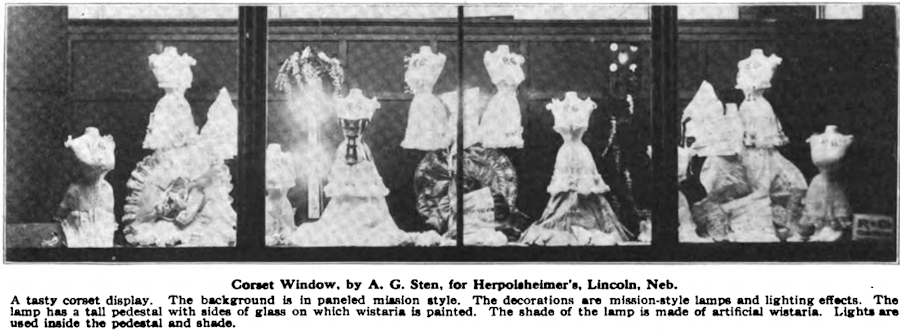
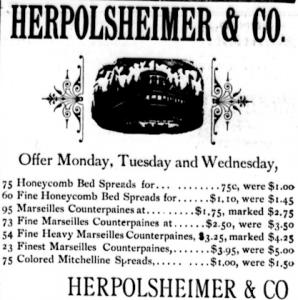 Herpolsheimer’s sold a wide variety of goods. An ad in the January 28, 1893 issue of the Capital City Courier listed bedspreads, spreads and counterpaines for sale. The prices ranged from seventy-five cents up to $5.00.
Herpolsheimer’s sold a wide variety of goods. An ad in the January 28, 1893 issue of the Capital City Courier listed bedspreads, spreads and counterpaines for sale. The prices ranged from seventy-five cents up to $5.00.
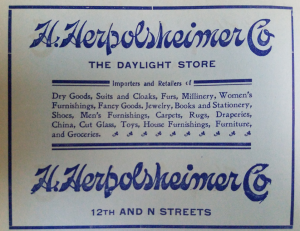 The ad for the H. Herpolsheimer Co. in the 1908 Lincoln Nebraska Directory (Jacob North & Company), lists many items for sale including dry goods, men’s and women’s furnishings, fancy goods, furs, toys and groceries.
The ad for the H. Herpolsheimer Co. in the 1908 Lincoln Nebraska Directory (Jacob North & Company), lists many items for sale including dry goods, men’s and women’s furnishings, fancy goods, furs, toys and groceries.
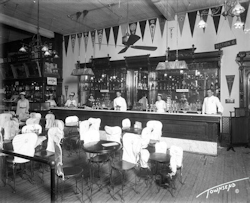 While I couldn’t find any information or advertisements for the soda fountain in the store, these 1914 photos show that they had one at that time. The signs on wall advertise items such as Dickinson’s Maple Mousse, a Mallow bitter sundae, Coca-Cola, and Vassar chocolates.
While I couldn’t find any information or advertisements for the soda fountain in the store, these 1914 photos show that they had one at that time. The signs on wall advertise items such as Dickinson’s Maple Mousse, a Mallow bitter sundae, Coca-Cola, and Vassar chocolates.
The Herpolsheimer Co. closed in 1931. I don’t know exactly when the building was torn down but by early 1939, a Firestone service station stood in its place at the corner of 12th and N. While there is still a Firestone station on that corner today, the original building was torn down and replaced in 1998.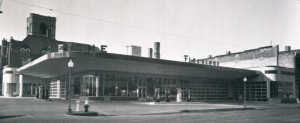
Visit Nebraska Memories to search for or browse through many more historical images digitized from photographs, negatives, postcards, maps, lantern slides, books and other materials.
Nebraska Memories is a cooperative project to digitize Nebraska-related historical and cultural heritage materials and make them available to researchers of all ages via the Internet. Nebraska Memories is brought to you by the Nebraska Library Commission. If your institution is interested in participating in Nebraska Memories, see http://nlc.nebraska.gov/nebraskamemories/participation.aspx for more information, contact Devra Dragos, Technology & Access Services Director.
Posted in General, Information Resources, Nebraska Memories, Technology
9 Comments
The Joys of Hunting Season in Nebraska
Before the advent of grocery stores, people produced much of their food. Although 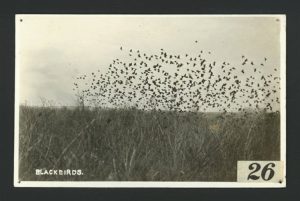 gardens and livestock supplied staples such as vegetables, milk and bacon, many settlers looked to hunting to supplement their diets as well as provide some much needed cash from the sale of pelts. Nebraska Memories not only features postcards and photographs birds and game, but of people posing with their rifles and the fruits of their labors as well.
gardens and livestock supplied staples such as vegetables, milk and bacon, many settlers looked to hunting to supplement their diets as well as provide some much needed cash from the sale of pelts. Nebraska Memories not only features postcards and photographs birds and game, but of people posing with their rifles and the fruits of their labors as well.
While the blackbirds featured in the above image may not have been intended for dinner, you can almost imagine a bird hunter eagerly awaiting their flight so that they might snag a bird or two to add to their collection. Take this photographic postcard from 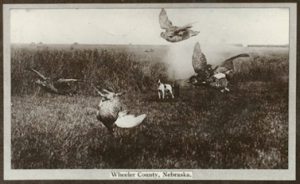 Wheeler County. It shows a hunter, with his trusty hunting dog, firing at several game birds. Chances are, these birds were destined for the family dinner table and the tail feathers used to decorate a hat.
Wheeler County. It shows a hunter, with his trusty hunting dog, firing at several game birds. Chances are, these birds were destined for the family dinner table and the tail feathers used to decorate a hat.
In addition to shooting game birds, Nebraskans hunted other animals, such as coyotes. After 1860, fur traders saw the value of coyote fur pelts increase from almost nothing to a few dollars or more per pelt. Coyote pelts could not be used as rugs, but they could be made into coats, jackets and hats. As such, they most likely became a source of income for many people. 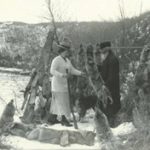 Additionally, ranchers disliked coyotes because they attacked sheep and cows. The couple featured in this postcard may have shot coyotes in order to harvest their fur or they may have been helping ranchers protect their livestock.
Additionally, ranchers disliked coyotes because they attacked sheep and cows. The couple featured in this postcard may have shot coyotes in order to harvest their fur or they may have been helping ranchers protect their livestock. 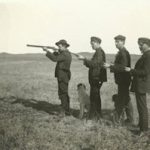
Not all photographs focus on potential targets or an expedition’s results. Some images are of the hunters themselves. This photographic postcard not only features four hunters posing with their shotguns, but three dogs can be glimpsed as well. While two of the three dogs are not visible clearly, the third one sits at his master’s feet, ready for action. Okay, maybe not. But bird hunters relied on dogs such as pointers, spaniels, setters, and retrievers to fetch downed birds. Despite their somewhat casual stances, I do not doubt the abilities of these hunters or their dogs.
Undoubtedly, hunting enabled many families to survive the often harsh and rugged Nebraska plains. A settler with a good shot gun could provide food, warm clothing or bedding in the form of fur pelts and cash from the sale of game or pelts. Hunting also helped protect livestock from predators like coyotes.
Visit Nebraska Memories to search for or browse through many more historical images digitized from photographs, negatives, postcards, maps, lantern slides, books and other materials.
Nebraska Memories is a cooperative project to digitize Nebraska-related historical and cultural heritage materials and make them available to researchers of all ages via the Internet. Nebraska Memories is brought to you by the Nebraska Library Commission. If your institution is interested in participating in Nebraska Memories, see http://nlc.nebraska.gov/nebraskamemories/participation.aspx for more information, contact Dragos Devra Technology & Access Services Director.
Posted in Nebraska Memories
Leave a comment
Throwback Thursday: Platte River Wagon Bridge
Postcard of Platte River Wagon Bridge, One Mile Long, Kearney, Nebraska. Approximate date early 1900’s.
Posted in General, Nebraska Memories
3 Comments
Throwback Thursday: Union Pacific Railroad Headquarters
Postcard of the Union Pacific Railroad Headquarters located in Omaha, Nebraska. Approximate date early 1900’s.
Posted in General, Nebraska Memories
Leave a comment
“The establishment of the town of Hastings was an afterthought…”
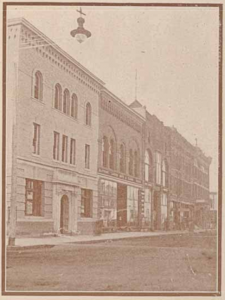
First National Bank – 2nd Street, West from Hastings Ave. As you can see in Google Street view, this building is still standing today.
“The establishment of the town of Hastings was an afterthought with the men who settled upon the three homesteads which formed the original parts of town.” I don’t know if that is true but that is what Henry G. Smith wrote in the Book of Hastings : a sketch of the town with illustrations. This book, published in 1906, is available in Nebraska Memories.
The Book of Hastings tells the history of the area starting in 1869. In 1873, the Hastings Town Company (page 6) was formed to develop the town of Hastings. On April 20, 1874, Hastings was declared an incorporated town.
Browsing this book, I learned a lot about the history of Hastings and the surrounding area. The book does not have a table of contents or an index, so I wanted to highlight some of the information available in this book.
- A number of railroads had service to or through Hastings over the years including the St. Joe & Grand Island, Burlington & Fremont, Elkhorn & Missouri Valley. (page 18)
- Juniata was selected as the county seat of Adams County in December 1871. Not everyone was happy with this. For years, folks fought to move the county seat to Hastings while others fought to keep it in Juniata.
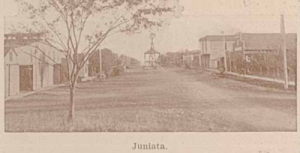
Juniata (page 81)
The group supporting Juniata won the 1875 election but lost the 1877 election. They were not happy with the loss and contested the vote. The issue was finally settled by Judge Gaslin. (page 22)
- A fire in 1879 destroyed 33 buildings in the Hastings business district. Many of the wooden buildings that burned were replaced with brick buildings. Later that year the Burlington depot was destroyed to cover up a murder. Fires in 1881, 1890, and 1905 also destroyed many businesses in town. (page 28)
- At the time this book was written, there were 18 church organizations in Hastings. A brief history of each organization is included. (page 40)
- The Hastings Library opened in January 1888. It was run by the Library Mite Society until it was taken over by the city government. In the spring of 1905 the new Carnegie building was completed. The library contained about 6,000 volumes. Miss Mabel Stone was the librarian. (page 46)
- Hastings residents started discussing the possibility of building a college in 1873 however, Hastings College did not become a reality until 1882. J. J. H. Hewitt was the first student to graduate in 1887. Dr. W. F. Ringland was the president of the college for the first 15 years. (page 70)
- Starting on page 81 you can find lists of many of the towns first officials including the mayor and councilmen.
- Towards the end of the book you will find a list of “Personal Sketches of Early Settlers” (page 95) followed by a list of businesses titled “Among the Business Houses” (page 103).
- The book is also full of pictures of houses however; most of them are only labeled with the name of the current resident.
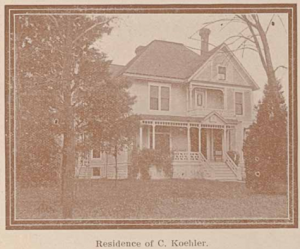
Residence of C. Koehler. (page 54)
I hope you take a few minutes to learn more about Hastings by looking at the Book of Hastings : a sketch of the town with illustrations.
Visit Nebraska Memories to search for or browse through many more historical images digitized from photographs, negatives, postcards, maps, lantern slides, books and other materials.
Nebraska Memories is a cooperative project to digitize Nebraska-related historical and cultural heritage materials and make them available to researchers of all ages via the Internet. Nebraska Memories is brought to you by the Nebraska Library Commission. If your institution is interested in participating in Nebraska Memories, see http://nlc.nebraska.gov/nebraskamemories/participation.aspx for more information, contact Devra Dragos, Technology & Access Services Director.
Throwback Thursday: Scotts Bluff National Monument in Nebraska.
Postcard of Scotts Bluff National Monument located in Scotts Bluff County in Nebraska, approximately early 1900’s.
Posted in General, Nebraska Memories
4 Comments
Throwback Thursday: Birds Eye View of Panama, Nebraska.
Posted in General, Nebraska Memories
Leave a comment
The Most Wonderful Time of the Year
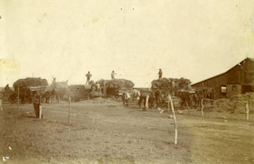 Fall is my favorite time of the year. I love the crisp morning air, the feel of a warm sweater, the tart taste of apple cider on my tongue. For some, however, fall is a sad time. The wheat has been harvested, the trees are bare, and winter is around the corner.
Fall is my favorite time of the year. I love the crisp morning air, the feel of a warm sweater, the tart taste of apple cider on my tongue. For some, however, fall is a sad time. The wheat has been harvested, the trees are bare, and winter is around the corner.
According to the song, “Nebraska in the Fall,” the leaves turn to “red and gold . . . . the flaming sumac flaunts her colors bold and 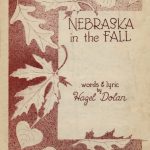 cottonwood and maple have turned to yellow gold!” Having moved to Lincoln in January, this will be my first Nebraska autumn. While I have experienced the cooler mornings, I have yet to see trees dripping with red and orange colored leaves as described by the song’s writer, Hazel Dolan of Louisville.
cottonwood and maple have turned to yellow gold!” Having moved to Lincoln in January, this will be my first Nebraska autumn. While I have experienced the cooler mornings, I have yet to see trees dripping with red and orange colored leaves as described by the song’s writer, Hazel Dolan of Louisville.
However, fall does not invoke images such as those described by Hazel Dolan for all people. In my experience, some see fall as a season of leafless trees and bleak landscapes, like the scene on this postcard of the Pavilion at Omaha’s River Park. 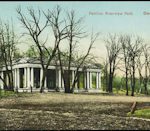 Regardless, many find a way to enjoy the season. This group from Lincoln’s Union College apparently found something to celebrate or at least a way to stay warm!
Regardless, many find a way to enjoy the season. This group from Lincoln’s Union College apparently found something to celebrate or at least a way to stay warm! 
While most of the fall-related images in Nebraska Memories are of leafless trees, there are many other pictures that capture the essence of autumn – crews harvesting hay and other crops, nature scenes and music scores.
Visit Nebraska Memories to search for or browse through many more historical images digitized from photographs, negatives, postcards, maps, lantern slides, books and other materials. Nebraska Memories is a cooperative project to digitize Nebraska-related historical and cultural heritage materials and make them available to researchers of all ages via the Internet. Nebraska Memories is brought to you by the Nebraska Library Commission. If your institution is interested in participating in Nebraska Memories, see http://nlc.nebraska.gov/nebraskamemories/participation.aspx for more information, Devra Dragos, Technology & Access Services Director
Posted in Nebraska Memories
Leave a comment
Throwback Thursday: Library of William Jennings Bryan
Postcard of the Library of William Jennings Bryan at Fairview, Lincoln, Nebraska. Approximate date is early 1900’s.
Posted in General, Nebraska Memories
1 Comment
